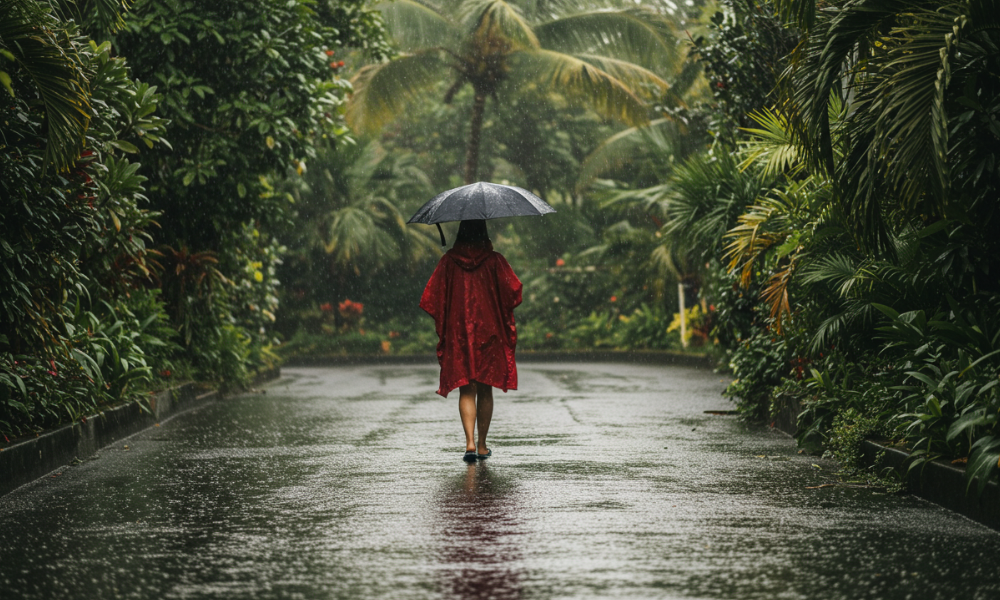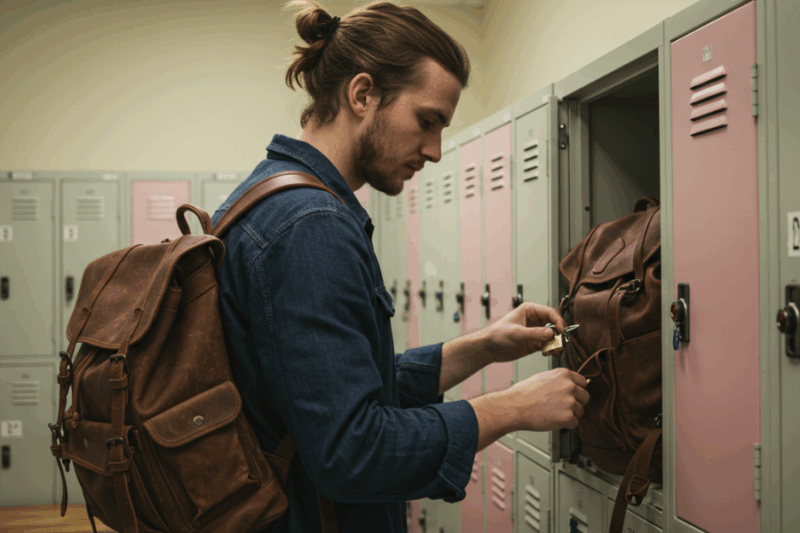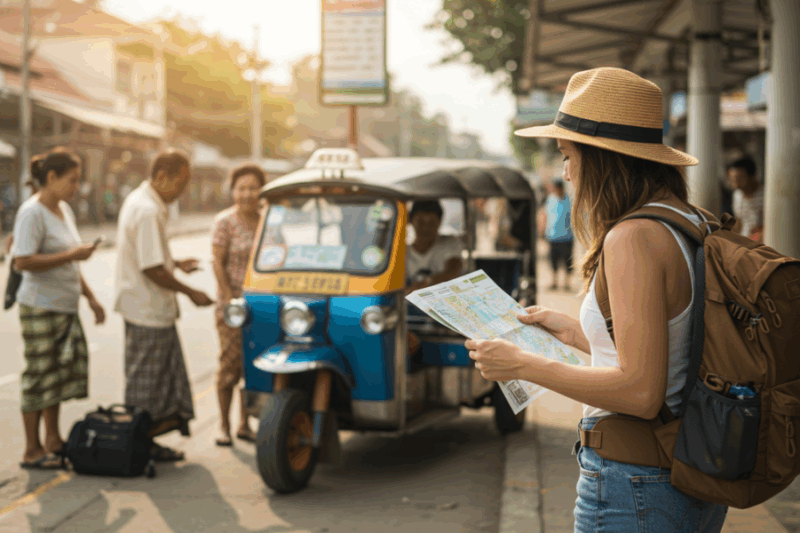Traveling during the rainy season can offer lush landscapes, fewer crowds, and lower prices, but it also brings challenges like sudden downpours, slippery paths, and transport disruptions. With the right preparation, you can stay safe and enjoy your trip. This guide for 2025 provides practical tips to travel safely during the rainy season, tailored for destinations like Southeast Asia, Central America, or other monsoon-prone regions.

1. Research Your Destination’s Rainy Season
Why It Matters: Rainy seasons vary by region, affecting safety and activities. Knowing patterns helps you plan.
How to Do It: Check weather data on AccuWeather or Weather Underground for your destination. For example, Southeast Asia’s monsoon runs May-October, with heavy rains in September; Costa Rica’s wet season is May-November. Note daily patterns—some areas get afternoon showers, leaving mornings clear.
Example: In Bali, expect short, intense rains in July, but sunny mornings are ideal for temple visits.
Tip: Choose shoulder months (e.g., May or October in Thailand) for milder weather and fewer tourists.
2. Pack Weather-Appropriate Gear
Why It Matters: Proper gear keeps you dry, comfortable, and safe on wet surfaces.
How to Do It: Pack lightweight, waterproof items:
- Rain Jacket/Poncho: A packable jacket (e.g., Columbia Watertight, $30-50) or poncho ($5-10) for sudden showers.
- Waterproof Shoes: Non-slip hiking shoes (e.g., Merrell Moab, $80) or sandals with grip (e.g., Teva, $40).
- Dry Bag: A 10L dry bag ($10-20) to protect electronics and documents.
- Quick-Dry Clothing: Polyester or merino wool outfits (e.g., Uniqlo Airism, $15) to avoid soggy clothes.
- Umbrella: Compact travel umbrella ($10) for urban areas.
Example: In Vietnam, waterproof sandals are perfect for navigating Hanoi’s wet streets.
Tip: Pack a microfiber towel ($10) for quick drying after rain. Test gear at home to ensure it’s leak-proof.
3. Choose Safe Accommodations
Why It Matters: Flood-prone or poorly maintained stays can be risky during heavy rain.
How to Do It: Book hotels or guesthouses in elevated areas or city centers, avoiding low-lying zones. Check reviews on Booking.com or Agoda for mentions of flooding or leaks. Look for backup power (generators) and Wi-Fi for weather updates.
Example: In Phnom Penh, stay near Riverside rather than outskirts prone to flooding. Budget guesthouses cost $10-30/night.
Tip: Confirm cancellation policies in case of severe weather. Save $10-20 by booking early.
4. Plan Indoor and Flexible Activities
Why It Matters: Rain can disrupt outdoor plans; alternatives keep your trip enjoyable.
How to Do It: Mix outdoor and indoor activities. Research museums, cooking classes, or cafes via TripAdvisor. Schedule hikes or beach trips for mornings if afternoons are wetter. Keep a list of backup options (e.g., temples with covered areas).
Example: In Chiang Mai, visit Wat Chedi Luang (partly covered) or join a cooking class ($15-20) during rain.
Tip: Book flexible tours (free cancellation) via GetYourGuide. Carry a small notebook for itinerary tweaks.
5. Stay Informed About Weather Updates
Why It Matters: Sudden storms or typhoons can pose safety risks; real-time info helps you adapt.
How to Do It: Download weather apps like Windy or RainViewer for local forecasts. Follow regional weather agencies (e.g., PAGASA in the Philippines) on X for alerts. Check government sites for typhoon or flood warnings.
Example: In Japan, the JMA app warns of heavy rain in Okinawa during June.
Tip: Save local emergency numbers (e.g., 117 in Indonesia) and your embassy’s contact. Get a local SIM ($5-10 for 5GB) for data access.
6. Use Safe Transportation
Why It Matters: Wet roads and reduced visibility increase accident risks; reliable transport is key.
How to Do It: Avoid motorbikes in heavy rain unless experienced; opt for regulated taxis or ride-hailing apps like Grab (Southeast Asia, $2-5/ride) or Bolt (Central America). For buses, choose reputable companies (book via 12GoAsia) with good safety records. Check ferry schedules for cancellations during storms.
Example: In Costa Rica, use Uber in San José during downpours instead of local buses.
Tip: Allow extra travel time (30-60 minutes) for delays. Carry a waterproof backpack cover ($5).
7. Protect Your Health
Why It Matters: Rainy seasons raise risks of mosquito-borne diseases (e.g., dengue) or slips.
How to Do It: Use DEET-based repellent ($5-10) and wear long sleeves in jungle areas. Pack a first-aid kit with band-aids and antiseptics for minor injuries. Stay hydrated with bottled water ($0.50-1). Get travel insurance with medical coverage ($50,000+, World Nomads).
Example: In Malaysia, dengue is a risk in July; apply repellent before markets.
Tip: Check CDC’s Travelers’ Health for vaccinations (e.g., typhoid). Wear non-slip shoes to avoid falls on wet paths.
8. Secure Your Belongings
Why It Matters: Rain can damage electronics or documents, and crowded markets attract pickpockets.
How to Do It: Store passports, cash, and phones in waterproof pouches ($5-10). Use a money belt (e.g., Pacsafe, $15) under clothing. Back up documents digitally (Google Drive). Keep small bills (e.g., $1-5 USD equivalent) for quick purchases.
Example: In Siem Reap’s markets, a dry bag protects your camera during sudden showers.
Tip: Split cash between your bag and belt to minimize loss. Use a lockable backpack for hostels.
9. Avoid Flood-Prone Areas
Why It Matters: Flash floods can be dangerous, especially in urban or low-lying regions.
How to Do It: Research flood risks via local news or travel forums (Reddit’s r/travel). Avoid riverside paths or underpasses during heavy rain. Stick to elevated routes or main roads. If caught in a flood, move to higher ground and follow local guidance.
Example: In Bangkok, avoid Sukhumvit’s side streets during August monsoons; use BTS Skytrain ($1-2).
Tip: Carry a lightweight poncho for quick cover. Save a map of safe routes on Maps.me offline.
10. Stay Flexible and Positive
Why It Matters: Weather disruptions are inevitable; adaptability keeps your trip enjoyable.
How to Do It: Build buffer days into your itinerary for delays. Practice mindfulness at home (5-minute meditation via Headspace) to stay calm. Embrace rainy moments—sip coffee in a cafe or read in your hostel.
Example: In Guatemala, a rainy afternoon in Antigua is perfect for a museum visit ($3-5).
Tip: Journal daily (even 5 minutes) to reflect on highlights, keeping spirits high despite weather.
Why This Matters in 2025
Rainy seasons are becoming less predictable due to climate shifts, making preparation crucial. Digital tools (weather apps, ride-hailing) and affordable gear (dry bags, ponchos) simplify safe travel. With tourism rebounding, rainy season visits offer savings (20-40% off peak rates) and quieter sites, but safety is paramount.
Final Thoughts
Traveling during the rainy season can be rewarding with lush scenery and fewer crowds, but safety comes first. Start preparing now—pack waterproof gear, check forecasts, and plan flexible activities. Whether exploring Bali’s rice fields or Costa Rica’s jungles, these tips will keep you dry, safe, and ready to enjoy the journey. Embrace the rain and travel confidently!



